Rio de Janeiro Travel Guide
Rio de Janeiro Travel Guide – plan your trip to Rio with our travel guide including how to get around, things to see and do, what and where to eat and many more.
Welcome to Rio de Janeiro, the vibrant and captivating city nestled between lush mountains and sparkling beaches. Known as the “Cidade Maravilhosa” or Marvelous City, Rio de Janeiro offers a rich cultural tapestry, breathtaking natural beauty, and a contagious energy that is sure to leave you mesmerized. Get ready to immerse yourself in the rhythms of samba, indulge in delicious Brazilian cuisine, and explore iconic landmarks that define the city’s allure.

Travel to Rio de Janeiro
As you step foot in Rio, one cannot miss the iconic statue of Christ the Redeemer standing tall atop Corcovado Mountain, welcoming visitors from around the world with open arms. Take a scenic train ride up the mountain and witness panoramic views of the city’s sprawling landscape, including the famous Copacabana and Ipanema beaches. Speaking of beaches, Rio boasts some of the most stunning stretches of sand, where you can soak up the sun, sip on caipirinhas, and watch locals engage in a game of footvolley or beach soccer.
Beyond the natural beauty, Rio pulsates with a vibrant cultural scene. Explore the bohemian neighborhood of Santa Teresa, with its cobblestone streets, colorful houses, and art galleries. Marvel at the stunning architecture of the Municipal Theater and the Candelária Church, or soak up the electric atmosphere of a live samba performance in the lively neighborhood of Lapa. Don’t miss the world-famous Carnival, a dazzling spectacle of music, dance, and elaborate costumes that takes over the streets of Rio, capturing the essence of the city’s exuberance.
Rio de Janeiro is a city that never fails to leave a lasting impression. From its captivating landscapes to its infectious spirit, this city is a playground for the senses. Soak up the sun on its stunning beaches, explore its vibrant neighborhoods, and immerse yourself in its rich cultural heritage. Prepare to be enchanted as you embark on an unforgettable journey through the Marvelous City.

The best time to go to Rio de Janeiro – the 4 seasons in Rio de Janeiro
The city experiences a tropical climate with warm temperatures throughout the year. However, there are some seasonal variations worth considering.
Summer (December to February): This is the peak tourist season in Rio de Janeiro. The weather is hot and humid, with temperatures often reaching the high 80s Fahrenheit (around 30 degrees Celsius). It’s an ideal time for beachgoers and water sports enthusiasts. However, keep in mind that this period coincides with the school holidays in Brazil, so popular attractions and beaches can be crowded.
Autumn (March to May): Autumn in Rio is characterized by slightly milder temperatures, ranging from the mid-70s to low 80s Fahrenheit (around 20-28 degrees Celsius). This season is less crowded compared to summer, making it a good time to explore the city’s attractions and enjoy outdoor activities. The ocean is still warm enough for swimming, and you might find more affordable accommodation options.
Winter (June to August): Rio’s winter is mild, with temperatures averaging in the mid-60s to low 70s Fahrenheit (around 17-23 degrees Celsius). While it may not be the typical beach weather, it’s still comfortable for exploring the city. This season sees fewer tourists, making it a great time to visit if you prefer a quieter and more relaxed atmosphere. You might also catch some cultural events and festivals during this time.
Spring (September to November): Springtime in Rio is warm and pleasant, with temperatures ranging from the mid-70s to high 80s Fahrenheit (around 24-30 degrees Celsius). The city starts to come alive with colorful blooms, and the lush vegetation looks particularly beautiful. This season is a great time to enjoy outdoor activities, visit attractions, and experience the local culture without the peak-season crowds.

Visa and entry requirements
Travelers from the United States, Europe, and several other countries can visit Brazil, including Rio de Janeiro, for tourism purposes without obtaining a visa in advance. Brazil implemented a visa waiver program for citizens of these countries.
However, please note that visa requirements can change, and it’s essential to verify the most up-to-date information before your travel. I recommend checking with the Brazilian embassy or consulate in your country or visiting the official website of the Brazilian Ministry of Foreign Affairs for the latest visa requirements and entry regulations for your specific nationality. They will provide you with the most accurate and current information regarding visa exemptions or any changes to the entry requirements for travelers to Brazil.
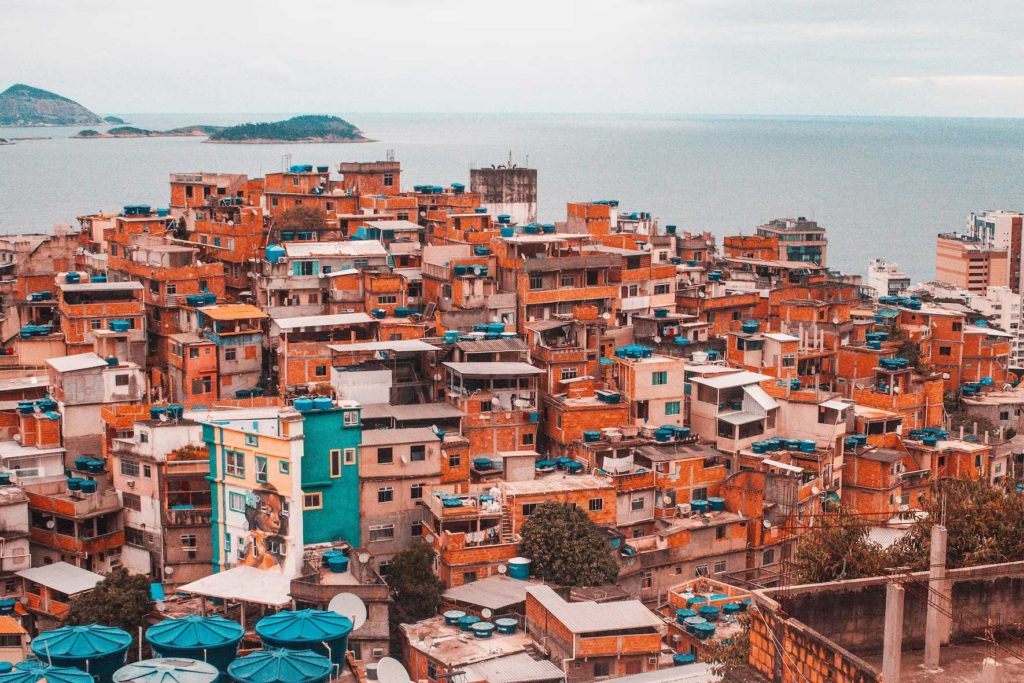
From the airport to the City Center
When you land at Rio de Janeiro’s Galeão International Airport (GIG) or Santos Dumont Airport (SDU), there are several transportation options to reach the city center.
Taxi: Taxis are readily available at both airports. Look for the official taxi ranks and make sure to choose licensed taxis with a visible company logo. The approximate cost from Galeão International Airport to the city center is around 60-100 Brazilian Reais (BRL), depending on the time of day and traffic conditions. From Santos Dumont Airport, the cost is usually lower, ranging from 20-40 BRL.
Ride-Sharing Apps: Uber and other ride-sharing services are widely used in Rio de Janeiro. You can use the app on your smartphone to request a ride to the city center. The cost may vary depending on demand, but it is generally similar to or slightly cheaper than regular taxis.
Airport Shuttle: Some hotels in Rio de Janeiro offer shuttle services from the airports. It’s advisable to check with your hotel in advance if they provide this service and how to arrange for it.
Public Transportation: At Galeão International Airport, you can take the BRT (Bus Rapid Transit) system. Look for the BRT station outside the arrivals area, and take the appropriate bus to reach the city center. The cost is relatively low, usually around 5-10 BRL. Santos Dumont Airport is conveniently located near the city center, and you can easily walk or take a short taxi/ride-share trip.
Please note that prices mentioned here are approximate and subject to change. It’s a good idea to confirm the rates with the taxi driver or check the latest transportation fares before your journey.

The best ways to get around Rio de Janeiro
Here are some of the best ways to navigate Rio de Janeiro:
Metro: The metro system in Rio de Janeiro is efficient, safe, and a convenient way to travel within the city. It covers several popular areas and tourist attractions. The metro operates from 5 am to midnight, and it’s a reliable option for avoiding traffic congestion during peak hours.
Bus: Rio de Janeiro has an extensive bus network that reaches almost every corner of the city. Buses are a cost-effective way to get around, but they can be crowded, especially during rush hours. It’s important to check the routes and have some basic knowledge of the city’s bus system before boarding. The Rio de Janeiro State Secretariat for Transport offers an online tool called “Vá de Ônibus” (Go by Bus) that can help you plan your bus routes.
Taxi and Ride-Sharing: Taxis are widely available throughout the city. Look for official taxis with a visible company logo and use reputable taxi apps or ride-sharing services like Uber, 99, or Cabify for a convenient and often cheaper alternative to traditional taxis. These services are accessible through mobile apps and provide a reliable means of transportation.
Bike-Sharing: Rio de Janeiro has a bike-sharing system called “Bike Itaú,” which offers bicycles for rent at various locations around the city. It’s a fun and eco-friendly way to explore certain areas, such as the beachfront or parks. Just be cautious when cycling in heavy traffic areas.
Walking: Rio de Janeiro’s compact neighborhoods, especially in the Zona Sul (South Zone), are pedestrian-friendly. Walking is a great way to soak up the vibrant atmosphere, especially along the beaches and in areas like Copacabana and Ipanema. Just be aware of your surroundings and take normal precautions to ensure your safety.

Explore Rio’s neighborhoods
Copacabana
Copacabana is a vibrant neighborhood in Rio de Janeiro renowned for its iconic beach and bustling energy. The atmosphere here is electric, with a mix of locals and tourists enjoying the lively vibe day and night. The neighborhood is known for its stunning coastline, where you can relax on the golden sands, take a dip in the refreshing ocean, and watch the world go by. Points of interest include the historic Forte de Copacabana, offering breathtaking views of the beach, and the luxurious Copacabana Palace, where you can indulge in world-class dining. When it comes to eateries, Confeitaria Colombo is a must-visit, offering delectable pastries and traditional Brazilian dishes in an elegant setting. Churrascaria Palace is another favorite, serving mouthwatering Brazilian barbecue. Copacabana’s energy, beach culture, and culinary delights make it an unmissable neighborhood in Rio.
Santa Teresa
Nestled on a hilltop, Santa Teresa is a bohemian paradise with a charming, laid-back atmosphere. This neighborhood is known for its cobblestone streets, colonial architecture, and vibrant art scene. It’s a haven for artists, creatives, and those seeking a more relaxed and artsy vibe. Parque das Ruínas offers stunning panoramic views of the city, along with cultural events and exhibitions. The Escadaria Selarón, a vibrant mosaic stairway, is a true marvel. Art enthusiasts should visit the Museu da Chácara do Céu, which showcases Brazilian and international art. When it comes to dining, Aprazível is a top choice, providing an enchanting setting, Brazilian cuisine, and breathtaking views. For a taste of traditional Brazilian dishes, Bar do Mineiro is a cozy spot loved by locals. Santa Teresa’s bohemian flair, artistic charm, and culinary delights create an enchanting neighborhood to explore.
Ipanema
Ipanema is an upscale and trendy neighborhood in Rio de Janeiro known for its fashionable boutiques, beautiful beach, and vibrant nightlife. The atmosphere exudes effortless style and chicness. Ipanema Beach is a must-visit, offering a stunning coastline, vibrant sunsets, and a lively ambiance. On Sundays, the Hippie Fair at Praça General Osório showcases unique arts, crafts, and souvenirs. Galeria River is perfect for art lovers, with contemporary art galleries and boutique shops. Zaza Bistro Tropical is a standout eatery, offering a fusion of flavors using organic and locally sourced ingredients, all served in a picturesque setting. Another notable spot is Garota de Ipanema, the restaurant that inspired the famous bossa nova song, where you can enjoy Brazilian dishes and live music. Ipanema’s chic vibe, fashionable boutiques, and diverse culinary scene make it a captivating neighborhood to explore.
Leblon
Leblon is an upscale neighborhood in Rio de Janeiro known for its sophisticated atmosphere and stunning beach. It is often considered the more refined sibling of neighboring Ipanema. Leblon offers a more relaxed and exclusive vibe, with luxurious residential buildings, high-end boutiques, and upscale dining options. The beach at Leblon is less crowded than other popular beaches, making it perfect for those seeking a more serene sunbathing experience. Points of interest include the vibrant Rua Dias Ferreira, lined with trendy restaurants and bars, and the beautiful Jardim de Allah, a peaceful park where you can enjoy a leisurely stroll. For a memorable dining experience, visit Sushi Leblon, renowned for its exceptional sushi and Japanese cuisine. Another popular choice is CT Boucherie, a steakhouse offering top-quality meats. Leblon’s upscale ambiance, elegant boutiques, and culinary delights make it a sophisticated neighborhood worth exploring.


Lapa
Lapa is a vibrant and boisterous neighborhood in Rio de Janeiro, known as the city’s cultural and nightlife hub. It is famous for its lively samba clubs, live music venues, and vibrant street parties. The atmosphere in Lapa is electric, with music and dancing filling the air. The iconic Arcos da Lapa, an impressive aqueduct, is a symbol of the neighborhood. Points of interest include the colorful Escadaria Selarón, an artistic masterpiece adorned with colorful tiles, and the traditional Circo Voador, a renowned music venue hosting both Brazilian and international artists. For a true taste of Lapa, visit Rio Scenarium, a multi-story club housed in a beautifully restored antique warehouse, offering live music and a vibrant atmosphere. Another popular choice is Bar do Mineiro, serving delicious Brazilian food and the famous caipirinha cocktail. Lapa’s lively spirit, music-filled streets, and vibrant nightlife make it a must-visit neighborhood for those seeking a memorable and energetic experience.
Barra da Tijuca
Barra da Tijuca, often referred to simply as Barra, is a sprawling neighborhood in Rio de Janeiro known for its beautiful beaches, modern infrastructure, and outdoor activities. It offers a more residential and suburban feel compared to the bustling city center. Barra da Tijuca boasts stunning stretches of sandy beaches that are less crowded than those in the southern zones of the city. It is also a popular destination for water sports enthusiasts, with opportunities for surfing, windsurfing, and kitesurfing. Nature lovers can explore the lush greenery of the Tijuca National Park, which includes hiking trails and waterfalls. When it comes to dining, Alessandro & Frederico Pizzaria is a popular choice, offering delicious wood-fired pizzas in a cozy setting. For seafood lovers, Ostra & Ouriço is a seafood restaurant known for its fresh catches and innovative dishes. Barra da Tijuca’s natural beauty, outdoor activities, and dining options make it an ideal neighborhood for those seeking a more relaxed and beach-focused experience in Rio de Janeiro.
Centro
Centro, the historical heart of Rio de Janeiro, is a bustling neighborhood known for its architectural gems, cultural landmarks, and vibrant street life. This downtown area showcases the city’s rich history and serves as a hub of commerce and government. Key points of interest include the imposing Candelária Church, the magnificent Municipal Theater, and the impressive National Library. The vibrant Saara Market is a bustling shopping district where you can find a wide array of goods at affordable prices. When it comes to dining, Casa da Feijoada is a fantastic choice, serving the traditional Brazilian feijoada in a cozy and welcoming atmosphere. For a taste of Brazilian street food, head to Rio Scenarium Gastronomia, a lively eatery with a diverse menu. Centro’s historical significance, architectural wonders, and lively street scenes make it a must-visit neighborhood for those interested in Rio de Janeiro’s cultural heritage.
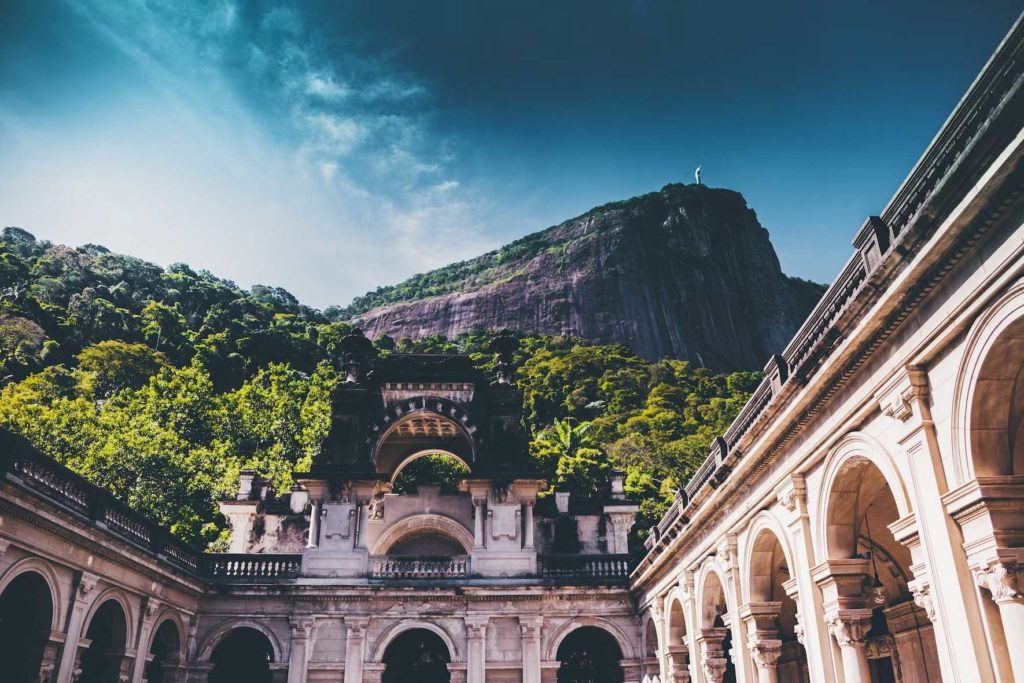
Attractions and things to do in Rio de Janeiro
Rio de Janeiro is an amazing city full of attractions and experiences to explore. From its beautiful beaches, samba culture, and the iconic statue of Christ the Redeemer, there are plenty of things to do in Rio de Janeiro. Here are 15 must-see attractions and experiences you should not miss when visiting Rio de Janeiro:
Sugarloaf Mountain
This iconic mountain is a must-visit attraction in Rio de Janeiro. You can take a cable car ride to the top, where you’ll be rewarded with breathtaking panoramic views of the city, Guanabara Bay, and the Atlantic Ocean. The journey itself is an experience as you ascend to Morro da Urca and then continue to the summit of Sugarloaf Mountain. Capture stunning photos, enjoy the sunset, and soak in the mesmerizing scenery.
Corcovado
Christ the Redeemer – Standing tall atop Corcovado Mountain, the Christ the Redeemer statue is an enduring symbol of Rio de Janeiro. Take a train or van ride through the lush Tijuca Forest to reach the statue. Marvel at the impressive artistry and craftsmanship of this colossal statue and embrace the awe-inspiring views of the city stretching out before you. It’s a spiritual and cultural landmark that offers a sense of serenity and perspective.
Botanical Garden
Immerse yourself in the natural beauty of the Jardim Botânico, a paradise for nature lovers. Stroll through lush gardens, explore tranquil ponds, and discover over 6,500 species of plants from around the world. The garden also houses historical buildings, including the Crystal Palace, where you can admire beautiful exhibitions. It’s a serene escape from the city’s hustle and bustle, providing a peaceful and educational experience.
Morro da Urca
Located on the way to Sugarloaf Mountain, Morro da Urca offers stunning views of Guanabara Bay and Sugarloaf Mountain itself. Take a cable car ride to this hill, and once there, you can enjoy a variety of restaurants and bars, offering a perfect spot to relax, enjoy a meal, and appreciate the breathtaking surroundings. The atmosphere is lively and vibrant, making it a popular spot for both locals and tourists.
Ipanema Beach
Known for its white sand and crystal clear waters, Ipanema Beach is one of Rio’s most famous and picturesque beaches. Relax on the soft sands, take a refreshing swim, or simply soak up the sun while enjoying the vibrant beach culture. The neighborhood surrounding Ipanema Beach is also filled with trendy boutiques, cafes, and restaurants, offering a lively and upscale atmosphere.
Copacabana Beach
Another iconic beach in Rio de Janeiro, Copacabana offers a vibrant atmosphere with a mix of locals and tourists. The long stretch of golden sand invites you to sunbathe, play beach sports, or take a stroll along the promenade. Enjoy the bustling nightlife scene with numerous bars, clubs, and restaurants. Don’t miss the chance to witness a dazzling fireworks display during New Year’s Eve, as Copacabana hosts one of the world’s largest celebrations.

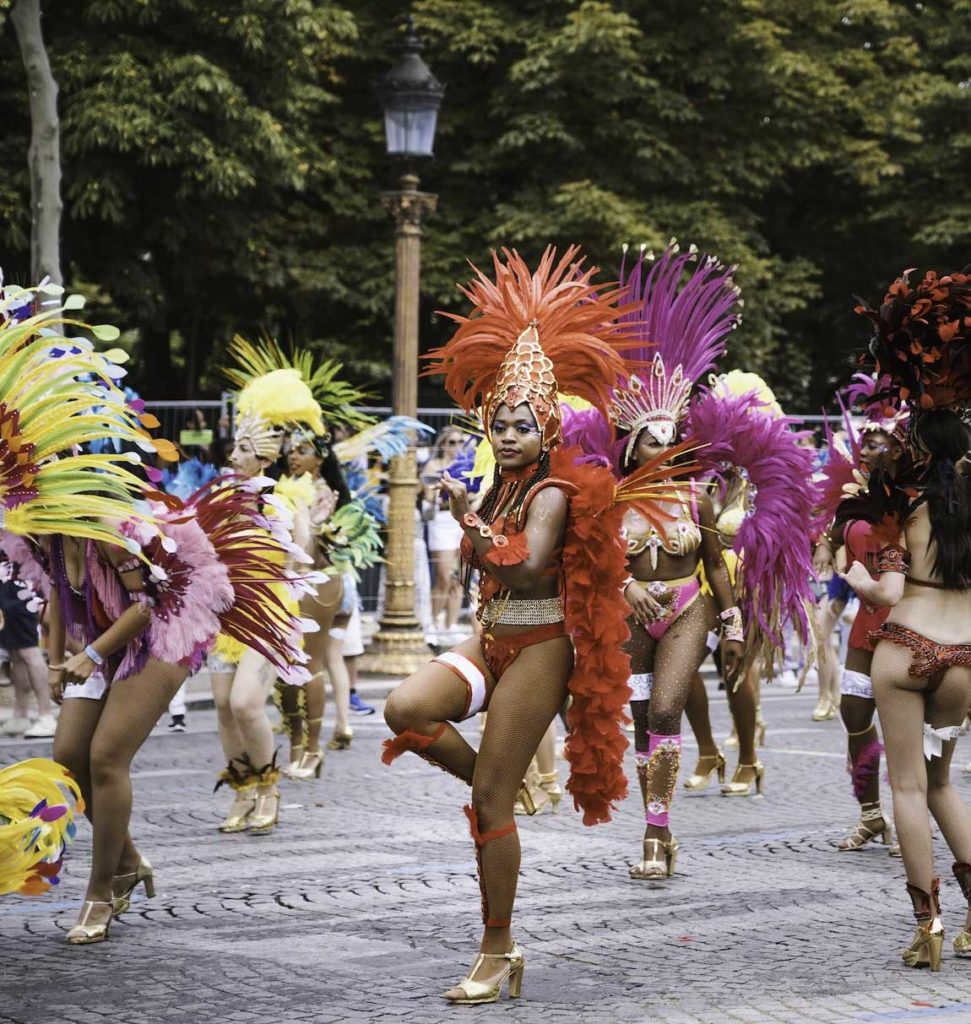
Watch a soccer match at Maracanã Stadium
Soccer, or futebol, holds a special place in Brazilian culture, and attending a game at the legendary Maracanã Stadium is an experience like no other. Join the passionate crowd as you cheer for your favorite team, soak in the electrifying atmosphere, and witness the skill and enthusiasm that makes Brazilian soccer so revered worldwide. The stadium’s rich history and iconic status as a venue for major football events add to the allure of this unforgettable experience.
Samba dancing
Immerse yourself in the captivating rhythms and vibrant energy of samba, the quintessential Brazilian dance. Rio de Janeiro is the perfect place to witness and participate in this lively cultural tradition. Explore the city’s samba schools, which are not just places for dance but also social hubs where the local community comes together to celebrate. Join a samba class, visit a samba club, or attend a live samba performance to fully experience the infectious joy and spirit of this captivating dance form.
Try local cuisine
Rio de Janeiro offers a rich and diverse culinary scene that is a reflection of Brazil’s cultural melting pot. Don’t miss the opportunity to indulge in the flavors of Brazilian cuisine. Try feijoada, a hearty stew made with black beans and various cuts of meat, accompanied by traditional sides like rice, farofa (toasted cassava flour), and couve (collard greens). Sink your teeth into succulent churrasco, Brazilian-style barbecued meats served rodizio-style. Visit local food markets, beach kiosks, or traditional restaurants to sample a variety of delectable dishes that showcase the country’s culinary heritage.
Hang gliding or paragliding
For the adventurous souls, Rio de Janeiro offers breathtaking opportunities for hang gliding or paragliding. Take to the skies and witness the city’s stunning landscape from a whole new perspective. Soar above the mountains, coastline, and iconic landmarks, feeling the rush of adrenaline as you glide through the air. Experienced instructors and operators provide safe and exhilarating experiences, allowing you to embrace the beauty of Rio from an awe-inspiring vantage point.
Parque Nacional da Tijuca
Escape the urban bustle and explore the lush wonders of Parque Nacional da Tijuca, one of the world’s largest urban rainforests. This vast national park is home to an incredible array of wildlife, including monkeys, toucans, sloths, and even jaguars. Discover hiking trails that wind through dense vegetation, leading to stunning waterfalls and breathtaking viewpoints. Experience the serenity of nature and immerse yourself in the vibrant biodiversity that thrives within this urban oasis. It’s a chance to connect with the natural wonders that coexist harmoniously with Rio’s vibrant cityscape.
Arpoador Rock
Situated between Copacabana Beach and Ipanema Beach, Arpoador Rock is a natural rock formation that provides an excellent opportunity for capturing breathtaking photos. As the sun sets over the ocean, locals and visitors gather here to witness a stunning spectacle of color and light. The view encompasses both iconic beaches, creating a picture-perfect backdrop. Enjoy the sound of crashing waves, feel the ocean breeze, and soak in the incredible views as day transitions into a vibrant evening.
Municipal Theater
Immerse yourself in the cultural scene of Rio de Janeiro by visiting the Municipal Theater. Built in 1909, this architectural masterpiece showcases exquisite design and hosts a variety of performances throughout the year, including opera, ballet, and classical music concerts. Step inside this historic venue and be transported to a world of artistic excellence. From its ornate interior to its grand stage, the Municipal Theater is a testament to the city’s passion for the arts.
Niterói Contemporary Art Museum
Cross the iconic Rio-Niterói Bridge to reach the Niterói Contemporary Art Museum, a stunning architectural marvel that houses a collection of modern art pieces by Brazilian artists. Designed by renowned architect Oscar Niemeyer, the museum’s unique and futuristic structure is a work of art in itself. Explore the exhibits, which showcase a diverse range of contemporary art forms, and enjoy sweeping views of Guanabara Bay and Rio’s skyline. It’s a must-visit destination for art enthusiasts and anyone seeking a unique cultural experience.


Tijuca National Park
Embark on a nature-filled adventure within the boundaries of Tijuca National Park, where lush rainforest trails transport you to a world of natural wonders. As you explore this expansive park, it’s easy to forget that you’re still within the city limits. Encounter diverse flora and fauna, cascading waterfalls, and hidden viewpoints that offer glimpses of Rio’s urban sprawl nestled amidst verdant greenery. Whether you choose to hike, cycle, or simply enjoy a picnic amidst nature, Tijuca National Park provides a serene escape from the bustling city and a chance to connect with Rio’s breathtaking natural environment.
Lapa Steps
Discover a unique artistic masterpiece in downtown Rio de Janeiro at the Lapa Steps, or Escadaria Selarón. Covered in vibrant and colorful mosaic tiles, this staircase is the creation of the late artist Jorge Selarón. Each step is a work of art, showcasing a mosaic of tiles collected from around the world. During the day, admire the intricate designs, and at night, the steps are illuminated, creating a magical atmosphere. Climb to the top and be rewarded with a magnificent view over the city, particularly breathtaking when the lights of Rio begin to twinkle against the darkened sky. It’s a must-visit spot for photography enthusiasts and art lovers alike.
Santa Teresa Tram
Step back in time and embark on a nostalgic journey through the charming Santa Teresa neighborhood aboard the Santa Teresa Tram, or bondinho. This historic tram has been operating since the early 20th century and provides a delightful way to explore the narrow streets and hilly landscapes of Santa Teresa. As you ride along, take in the picturesque views, quaint houses, and vibrant street art. The tram ride offers fantastic photo opportunities, capturing the essence of this bohemian neighborhood. It’s a charming and leisurely experience that transports you to a bygone era and allows you to appreciate the architectural beauty and cultural richness of Santa Teresa.

Fun things to do with kids and teens in Rio de Janeiro
Fun Things to Do with Kids in Rio de Janeiro:
Visit RioZoo: Take your kids on a wild adventure at RioZoo, located in Quinta da Boa Vista Park. Explore the diverse range of animal species, including lions, monkeys, birds, and reptiles. Enjoy educational exhibits, interactive experiences, and even the opportunity to feed some of the animals.
AquaRio: Dive into an underwater world at AquaRio, the largest marine aquarium in South America. Walk through tunnels surrounded by colorful fish, marvel at mesmerizing jellyfish displays, and learn about marine life through interactive exhibits. Don’t miss the opportunity to touch starfish and see sharks up close.
Tijuca Forest: Explore the enchanting Tijuca National Park, where kids can engage with nature and embark on exciting hikes. Discover hidden waterfalls, encounter playful monkeys swinging through the trees, and enjoy picnics amidst the lush rainforest. The park also offers zip-lining and treetop adventures for older kids.
Museu do Amanhã: Spark your children’s curiosity about science and the future at the Museu do Amanhã (Museum of Tomorrow). This innovative museum combines interactive exhibits, technology, and art to explore topics such as sustainability, climate change, and human impact on the planet.
Planetário do Rio: Inspire a love for astronomy at the Planetário do Rio. Through captivating shows in the dome-shaped theater, kids can journey through the universe, learn about celestial bodies, and engage in interactive displays that explain the wonders of space.
Fun Things to Do with Teens in Rio de Janeiro:
Surf Lessons: Ride the waves of Rio’s beautiful beaches by signing up for surf lessons. Experienced instructors will guide your teens through the basics, teaching them how to catch waves and enjoy the thrill of surfing. Praia da Macumba and Prainha are popular spots for surfing.
Bike Ride along the Beach: Rent bicycles and cycle along the beachfront promenades of Copacabana and Ipanema. Enjoy the refreshing ocean breeze, soak up the sun, and stop for snacks or refreshing coconut water along the way. It’s a great way to explore the vibrant beach culture of Rio.
Hang Gliding or Paragliding: For an adrenaline-filled adventure, take to the skies with hang gliding or paragliding. Rio’s stunning mountains and coastline offer an unparalleled backdrop for soaring through the air. Teens can experience the thrill of flying while taking in breathtaking views of the city.
Street Art Tour: Rio de Janeiro is renowned for its vibrant street art scene. Embark on a guided tour of neighborhoods like Santa Teresa and Lapa, where colorful murals and graffiti adorn the walls. Teens will appreciate the urban artistry and learn about the cultural significance behind these creative expressions.
Beach Volleyball and Soccer: Join a friendly game of beach volleyball or soccer on the sandy shores of Copacabana or Ipanema Beach. Rio’s beaches provide the perfect setting for teens to engage in energetic sports activities and have fun in the sun.
Rio Scenarium: Experience the lively nightlife of Rio de Janeiro by taking your teens to Rio Scenarium, a renowned live music venue. Enjoy the energetic rhythms of samba, forró, and other Brazilian music genres, while dancing the night away in a vibrant and festive atmosphere.
Rio de Janeiro offers an abundance of exciting activities for kids and teens alike. Whether exploring wildlife, immersing in cultural experiences, engaging in outdoor adventures, or enjoying the beach, there’s something to entertain and inspire every member of the family.
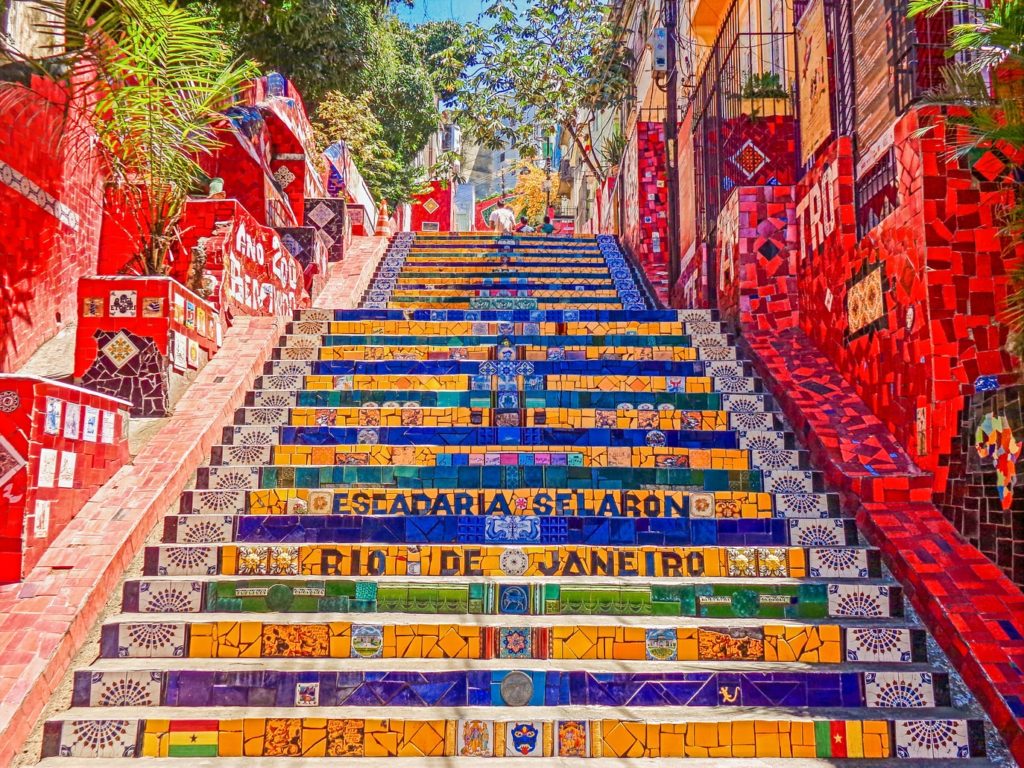
Where to stay in Rio de Janeiro
Copacabana Palace:
Location: Copacabana Beach
Features: A legendary 5-star hotel offering luxurious accommodations, world-class service, and stunning views of the ocean. It features an opulent spa, beachfront pool, Michelin-starred restaurants, and elegant rooms with a classic yet contemporary design.
Belmond Hotel Cipriani:
Location: Ipanema
Features: Nestled in the upscale neighborhood of Ipanema, this 5-star hotel offers a sophisticated and serene atmosphere. It boasts elegant rooms with breathtaking ocean views, a rooftop pool, a fitness center, and a gourmet Italian restaurant. Guests can also enjoy exclusive beach service.
Fasano Rio de Janeiro:
Location: Ipanema
Features: A boutique hotel renowned for its modern design and impeccable service. It offers spacious rooms with panoramic views, a rooftop infinity pool, a rooftop bar with stunning vistas, a luxurious spa, and a renowned restaurant serving Italian and Brazilian cuisine.
JW Marriott Hotel Rio de Janeiro:
Location: Copacabana Beach
Features: This 5-star hotel boasts a prime location directly on Copacabana Beach. It offers comfortable rooms with ocean views, a rooftop pool with a bar, a fitness center, and several dining options. It provides easy access to the beach and is close to shops and restaurants.
Hotel Santa Teresa Rio MGallery:
Location: Santa Teresa
Features: Set in the bohemian neighborhood of Santa Teresa, this charming boutique hotel offers a unique blend of modern luxury and colonial architecture. It features stylish rooms, a swimming pool with panoramic city views, a spa, and a restaurant serving contemporary Brazilian cuisine.


Sheraton Grand Rio Hotel & Resort:
Location: Leblon
Features: Situated on a secluded stretch of beach in Leblon, this 5-star hotel offers a tranquil retreat. It boasts spacious rooms with private balconies, a lush tropical garden, a lagoon-style pool, a full-service spa, and multiple dining options, including a beachfront restaurant.
Hilton Copacabana Rio de Janeiro:
Location: Copacabana Beach
Features: This iconic hotel provides modern comfort with direct access to Copacabana Beach. It offers stylish rooms with sea views, a rooftop infinity pool, a fitness center, multiple restaurants and bars, and a beachfront lounge area with sunbeds and umbrellas.
Emiliano Rio:
Location: Copacabana Beach
Features: A boutique hotel offering a blend of sophistication and warm hospitality. It features elegant rooms with balconies, a rooftop infinity pool, a spa, a fitness center, and a contemporary restaurant serving Brazilian cuisine with a Mediterranean twist.
Grand Hyatt Rio de Janeiro:
Location: Barra da Tijuca
Features: Situated on the beautiful Barra da Tijuca Beach, this luxurious hotel provides a tranquil retreat away from the city center. It offers spacious rooms with balconies, an expansive pool complex, a spa, a fitness center, and multiple dining options, including a beachfront restaurant.
Windsor Atlântica:
Location: Copacabana Beach
Features: Located on the iconic Copacabana Beach, this 5-star hotel offers comfortable rooms with ocean views, a rooftop pool, a fitness center, a sauna, and a restaurant serving Brazilian and international cuisine. It is within walking distance of shops, restaurants, and nightlife.

Food and drinks in Rio de Janeiro
Traditional food specialties and drinks you should try in Rio
Feijoada:
Feijoada is the national dish of Brazil and a must-try when visiting Rio de Janeiro. This hearty stew is made with black beans, various cuts of pork, and served with rice, collard greens, farofa (toasted cassava flour), and orange slices. For an authentic feijoada experience, head to Bar do Mineiro in Santa Teresa, a cozy spot loved by locals, or try Casa da Feijoada in Ipanema, which specializes in this traditional dish.
Coxinha:
Coxinha is a popular Brazilian snack that consists of shredded chicken, shaped into a teardrop or drumstick shape, breaded, and deep-fried to crispy perfection. It is a delicious and savory treat that can be found in many snack bars and street food stalls throughout Rio de Janeiro. One renowned place to savor coxinhas is Bolinhos do Rio in Copacabana, known for their flavorful fillings and crunchy exterior.
Pão de Queijo:
Pão de Queijo, or cheese bread, is a beloved Brazilian snack made from cassava flour and cheese. These small, cheesy rolls are soft and chewy on the inside with a slightly crispy exterior. You can find them in bakeries, cafes, and snack bars across Rio. For an excellent selection of freshly baked pão de queijo, head to Casa Cavé in Centro, a historic bakery renowned for its traditional Brazilian treats.
Açaí Bowl:
Açaí is a nutritious and refreshing fruit from the Amazon rainforest. In Rio de Janeiro, you’ll find many establishments serving açaí bowls, which are made by blending frozen açaí pulp with other fruits and toppings. One popular spot to enjoy this healthy treat is Polis Sucos in Copacabana, known for its variety of açaí bowl options and fresh fruit juices.

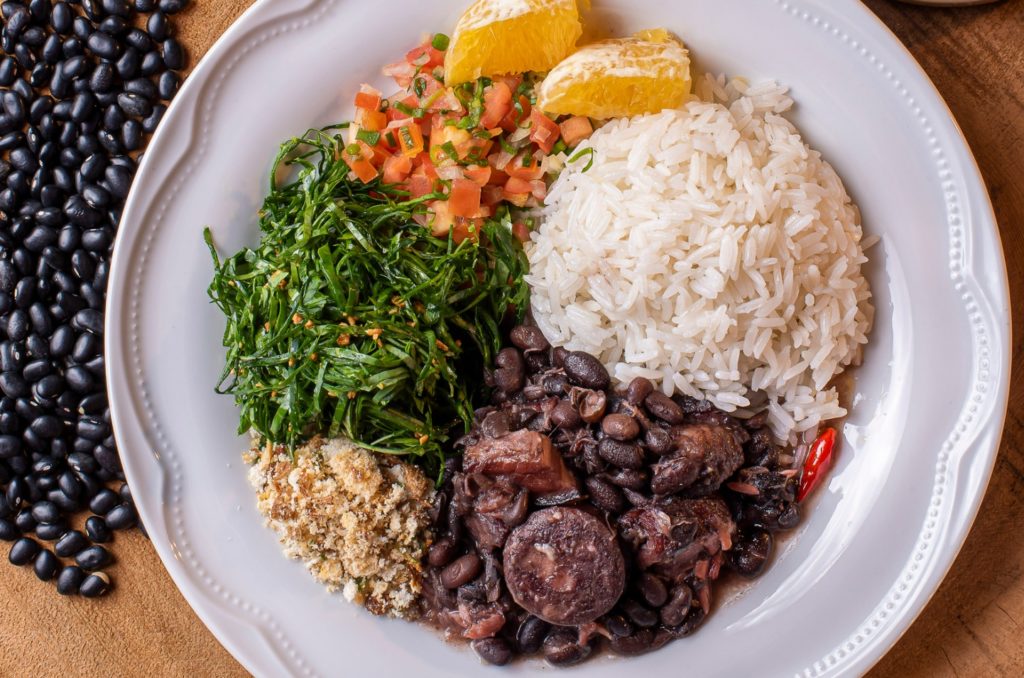
Caipirinha:
Caipirinha is the national cocktail of Brazil and a quintessential drink to try in Rio de Janeiro. It is made with cachaça (a sugarcane-based spirit), fresh lime, sugar, and ice. The result is a refreshing and tangy cocktail that packs a punch. You can find caipirinhas at most bars and restaurants in the city, but for a truly memorable experience, head to Academia da Cachaça in Leblon or Jobi in Copacabana, both renowned for their excellent caipirinhas.
Brigadeiro:
Brigadeiro is a traditional Brazilian sweet treat, often enjoyed at parties and celebrations. These bite-sized chocolate truffles are made from condensed milk, cocoa powder, butter, and chocolate sprinkles. You can find brigadeiros in various flavors and presentations at confectioneries and sweet shops throughout Rio de Janeiro. Try Brigadeiros Fabiana D’Angelo in Ipanema for a delectable selection of brigadeiros with unique twists.
Churrasco:
Churrasco, or Brazilian barbecue, is a meat lover’s delight. It involves skewered and grilled cuts of meat, typically beef, served with chimichurri sauce and accompanied by side dishes like farofa, rice, and black beans. For an authentic churrasco experience, head to a traditional Brazilian steakhouse, known as a churrascaria. Fogo de Chão in Botafogo and Carretão in Ipanema are popular choices, offering a wide selection of succulent grilled meats.

Iconic and best restaurants in Rio de Janeiro
Olympe
Chef: Claude Troisgros
Specialties: Olympe is renowned for its refined French-Brazilian fusion cuisine, combining French techniques with Brazilian ingredients. The menu features innovative and beautifully presented dishes that showcase the chef’s creativity and expertise.
Location: Rua Custódio Serrão, 62 – Jardim Botânico
Aprazível
Chef: Ana Castilho
Specialties: Aprazível offers a unique dining experience with its Brazilian farm-to-table concept. The menu features traditional Brazilian dishes prepared with locally sourced ingredients. Diners can enjoy breathtaking views of Santa Teresa while savoring dishes that highlight the diverse flavors of Brazil.
Location: Rua Aprazível, 62 – Santa Teresa
CT Boucherie
Chef: Claude Troisgros
Specialties: Known for its exceptional meat dishes, CT Boucherie offers a variety of cuts cooked to perfection. The menu features prime steaks, succulent ribs, and other meat specialties, all served in a cozy and inviting atmosphere.
Location: Rua Dias Ferreira, 636 – Leblon
Zaza Bistro Tropical
Chef: Katia Barbosa
Specialties: Zaza Bistro Tropical offers a fusion of flavors from around the world with a focus on tropical ingredients. The menu combines Brazilian, Asian, and Mediterranean influences to create innovative and delicious dishes. Don’t miss their creative cocktails and delectable desserts.
Location: Rua Joana Angélica, 40 – Ipanema
Roberta Sudbrack
Chef: Roberta Sudbrack
Specialties: Roberta Sudbrack is known for her contemporary Brazilian cuisine that highlights local ingredients and traditional flavors. The ever-changing menu showcases the chef’s culinary expertise and commitment to showcasing the best of Brazilian gastronomy.
Location: Rua Lineu de Paula Machado, 916 – Jardim Botânico


Bar Urca
Specialties: Bar Urca is famous for its seafood dishes and its iconic pastel de camarão (shrimp pastry). Located in a picturesque neighborhood, this casual spot offers outdoor seating with beautiful views of Guanabara Bay. It’s a favorite among locals and visitors alike.
Location: Rua Cândido Gaffrée, 205 – Urca
Azur
Chef: Pedro de Artagão
Specialties: Azur showcases the flavors of coastal Brazil with a focus on fresh seafood. The menu features a variety of fish and seafood dishes, creatively prepared with a modern twist. The relaxed ambiance and ocean views add to the overall dining experience.
Location: Av. Atlântica, 2230 – Copacabana

Rio de Janeiro best rooftops
Rio de Janeiro is a city of stunning views, and the best way to take them in is from one of its many rooftop bars. Here are 10 of the best rooftops in Rio de Janeiro that offer incredible views, delicious drinks, and an unforgettable experience.
Sky Leme Rooftop & Lounge: Located on the 21st floor of Leme, this rooftop bar offers breathtaking views of Copacabana Beach and beyond. Enjoy a variety of cocktails and snacks while you take in the sights.
Isabel Lounge: This luxurious 39th-floor lounge at Copacabana offers stunning 360-degree views of Rio de Janeiro’s skyline. Enjoy a variety of signature cocktails and light bites while you soak up the view.
Fasano Rooftop: Located atop the iconic Fasano Hotel, this rooftop bar offers panoramic views of Ipanema Beach and beyond. Enjoy signature cocktails and small plates while taking in the beauty of Rio de Janeiro from above.
Hotel Santa Teresa: This chic rooftop bar located atop Hotel Santa Teresa offers spectacular views over Rio de Janeiro’s historic center and beyond. Enjoy craft cocktails and light bites while admiring the view from above.
Pestano Hotel: Located on top of Pestano Hotel, this rooftop bar offers stunning views over Copacabana Beach and beyond. Enjoy a variety of signature cocktails and small plates while taking in the sights from above.
Babilonia Hostel: This chic rooftop bar located atop Babilonia Hostel offers spectacular views over Rio de Janeiro’s historic center and beyond. Enjoy craft cocktails and light bites while admiring the view from above.
Deck Lounge Bar by Pestana Hotel: Located on top of Pestana Hotel, this rooftop bar offers stunning views over Copacabana Beach and beyond. Enjoy a variety of signature cocktails and small plates while taking in the sights from above..
Moon Lounge: This chic rooftop bar located atop Moon Lounge offers spectacular views over Rio de Janeiro’s historic center and beyond.. Enjoy craft cocktails and light bites while admiring the view from above..
La Finestra: Located on top La Finestra, this rooftop bar offers stunning views over Copacabana Beach and beyond.. Enjoy a variety of signature cocktails and small plates while taking in the sights from above..
Walk on The Favela :This chic rooftop bar located atop Walk On The Favela offers spectacular views over Rio de Janeiro’s historic center and beyond.. Enjoy craft cocktails and light bites while admiring the view from above..
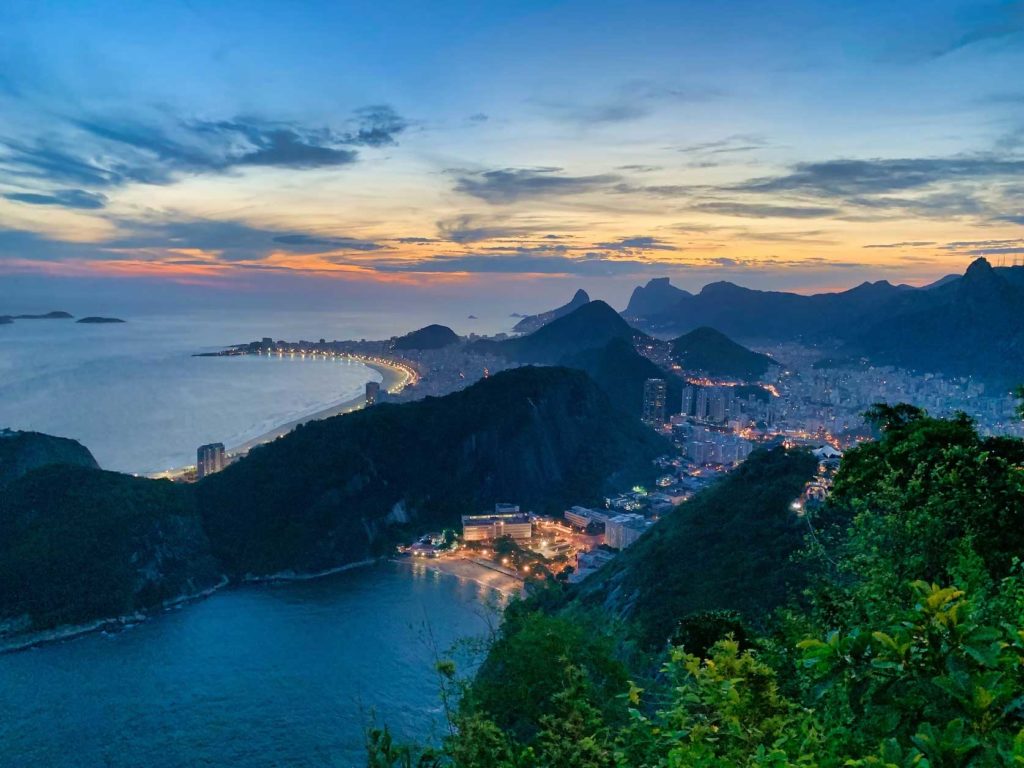
Cool bars in Rio de Janeiro
Whether you’re looking for a place to dance the night away or just want to enjoy a few drinks with friends, here are some of the best cool bars in Rio de Janeiro.
The first stop on your list should be Mestre-Cervejeiro, located in downtown Rio. This bar is known for its craft beer selection and lively atmosphere. If you’re looking for something more traditional, Carioca da Gema is one of the most popular spots in town. Here, you can find classic Brazilian cocktails like caipirinhas and chopps alongside live music and dancing.
For a unique experience, head to Bar Bukowski or Barra Music Hall. Both offer an eclectic mix of vintage decor and modern music that will make your night out memorable. If you’re looking for something more laid back, try Le Pule or Canastra Bar – two great places to people watch while enjoying some drinks with friends.
If you’re looking for something more upscale, check out Ipanema or Copacabana – two of Rio’s trendiest neighborhoods filled with chic bars and restaurants. Or if you’re feeling adventurous, visit Lapa & Santa Teresa – two areas known for their vibrant street life and colorful nightlife scene.

What not to do in Rio de Janeiro, things to avoid
Here are some key points to keep in mind when visiting Rio de Janeiro:
Displaying Valuables: Avoid flaunting expensive jewelry, cameras, or other valuable items in public. This can attract unwanted attention and increase the risk of theft. Keep your belongings secure and be mindful of your surroundings, particularly in crowded areas, public transportation, and tourist hotspots.
Wandering Alone in Unfamiliar Areas at Night: While Rio de Janeiro has many vibrant and safe neighborhoods, it’s advisable to exercise caution when exploring unfamiliar areas at night, especially if you are alone. Stick to well-lit and busy streets, and consider using reputable transportation services or registered taxis for increased safety.
Engaging in Street Gambling or Scams: Be cautious of street gambling games or individuals offering suspicious deals, such as “winning” lottery tickets or other enticing opportunities. These activities are often scams aimed at taking advantage of unsuspecting tourists. Stay alert and avoid participating in such activities to protect yourself from potential fraud.
Using Unofficial Transportation Services: It’s important to use registered taxis or reputable ride-sharing services to ensure your safety and avoid being overcharged. Avoid accepting rides from unmarked vehicles or unauthorized individuals posing as taxi drivers. Stick to licensed services and confirm the price before getting into the vehicle.
Leaving Belongings Unattended: Keep a close eye on your belongings at all times, especially in public areas, beaches, and restaurants. Avoid leaving bags, cameras, or other valuable items unattended, even for a short period. Utilize hotel safes or secure lockers when available to protect your valuables.
Swimming in Unpatrolled or Unsafe Beach Areas: While Rio de Janeiro boasts beautiful beaches, it’s crucial to pay attention to safety warnings and swim only in areas monitored by lifeguards. Avoid swimming in remote or secluded beach locations where there are no safety precautions in place. Strong currents and unpredictable tides can pose risks, so it’s best to adhere to local guidelines for a safe beach experience.
Accepting Drinks or Food from Strangers: Be cautious about accepting drinks or food from unfamiliar individuals, especially in crowded bars or nightlife areas. Instances of drink spiking or other illicit activities can occur, so it’s advisable to stay vigilant and keep an eye on your beverages.
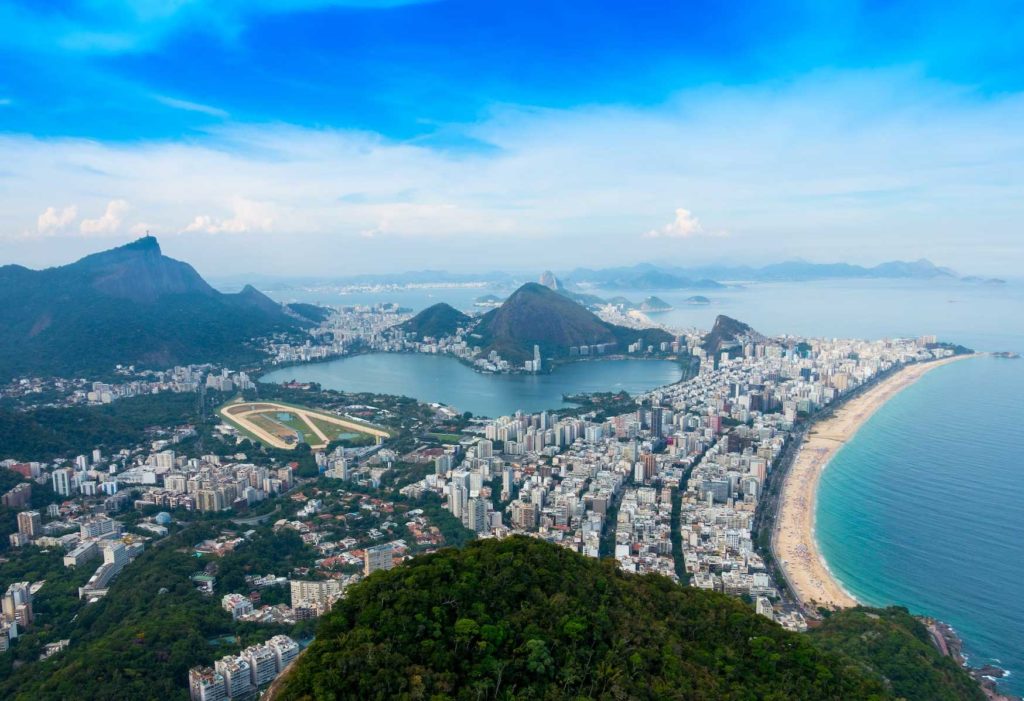
Shopping, taxation and tipping
Sales Tax (ICMS): In Rio de Janeiro, a sales tax called ICMS (Imposto sobre Circulação de Mercadorias e Serviços) is levied on most goods and services. The tax rate varies depending on the type of product or service but generally ranges from 17% to 25%. Keep in mind that the prices displayed in stores and on menus usually include this tax.
Service Charges: Some restaurants in Rio de Janeiro may include a service charge, known as “serviço” or “taxa de serviço,” in the bill. This charge is usually around 10% of the total bill and is intended to cover the service provided by the staff. However, it’s important to note that this service charge is not mandatory, and you can choose whether or not to pay it.
Tipping: Tipping in Rio de Janeiro is not mandatory but is commonly practiced to show appreciation for good service. If a service charge is not included in the bill, it is customary to leave a tip of around 10% of the total bill at restaurants. In bars and cafes, you can round up the bill or leave loose change as a token of appreciation for the service. Tipping hotel staff, such as bellhops or housekeeping, is also appreciated, usually around 2 to 5 Brazilian Reais per service.
Payment Methods: Most establishments in Rio de Janeiro accept major credit cards, such as Visa and Mastercard. Some places may also accept debit cards, but it’s always a good idea to carry some cash for smaller establishments, street vendors, or in case of any card payment issues. ATMs are widely available throughout the city for cash withdrawals.
Currency Exchange: When exchanging currency, it’s advisable to use authorized exchange offices or banks to ensure fair rates and avoid scams. It’s also worth noting that many places in Rio de Janeiro accept payment in both Brazilian Reais and major foreign currencies, such as US dollars or euros, particularly in tourist areas. However, it’s generally more convenient to use the local currency for transactions.

Safety and security in Rio de Janeiro
Neighborhood Safety: Rio de Janeiro has both safe and unsafe neighborhoods. It’s advisable to research and stick to well-known and tourist-friendly areas such as Copacabana, Ipanema, Leblon, and Santa Teresa. Avoid venturing into unfamiliar or high-crime areas, particularly at night. It’s always a good idea to consult with local residents, hotel staff, or trusted sources for up-to-date information on neighborhood safety.
Personal Belongings: Keep your personal belongings secure and be mindful of your surroundings, particularly in crowded places, public transportation, and tourist attractions. Avoid displaying valuable items, including expensive jewelry, cameras, or large sums of cash, as this can attract unwanted attention. Use hotel safes or secure bags when necessary and be cautious of pickpockets in crowded areas.
Transportation: When using public transportation, it’s advisable to opt for registered taxis or reputable ride-sharing services. Avoid unmarked taxis or accepting rides from unknown individuals. If possible, prearrange transportation or use reputable transportation apps for added safety. Be cautious when using public transportation at night and, if necessary, consult with locals or your hotel for guidance on the safest options.
Tourist Attractions: Popular tourist areas and attractions in Rio de Janeiro tend to have a visible police presence for enhanced security. However, it’s still important to remain vigilant, particularly in crowded areas. Keep a close eye on your belongings, avoid engaging in street gambling or scams, and be cautious of anyone offering suspicious deals or opportunities.
Beach Safety: While Rio’s beaches are iconic and beautiful, it’s essential to adhere to safety guidelines. Swim only in designated areas monitored by lifeguards and pay attention to warning flags indicating sea conditions. Strong currents can be dangerous, so follow lifeguard instructions and exercise caution when in the water. Avoid leaving personal belongings unattended on the beach.
Language and Culture: Familiarize yourself with basic Portuguese phrases to communicate with locals and show respect for the local culture. Brazilians are generally friendly and welcoming, but as with any travel destination, exercise caution when interacting with strangers and avoid providing personal or financial information to unknown individuals.


Final travel advice
Electricity: In Rio de Janeiro, the standard voltage is 110V or 220V, depending on the location. Most modern hotels and accommodations provide outlets that can accommodate both types, but it’s always a good idea to check before plugging in your devices. It is advisable to bring a universal travel adapter to ensure compatibility with different outlet types.
Currency and Payments: The official currency of Brazil is the Brazilian Real (BRL). Cash is widely accepted in smaller establishments, markets, and street vendors, so it’s advisable to carry some local currency for these transactions. However, major credit cards, such as Visa and Mastercard, are widely accepted in hotels, restaurants, and larger establishments. ATMs are readily available throughout the city for cash withdrawals.
Cost of Living: The cost of living in Rio de Janeiro can vary depending on your preferences and lifestyle. Generally, dining out, accommodation, and entertainment can be more expensive in popular tourist areas. However, there are options to suit different budgets. Street food and local eateries can offer more affordable dining choices, while public transportation is relatively inexpensive compared to private taxis or ride-sharing services.
Safety and Emergency Numbers: Rio de Janeiro’s emergency number for police, ambulance, and fire services is 190. It’s recommended to save this number in your phone and have it easily accessible in case of any emergencies. It’s also a good idea to have the contact information for your embassy or consulate in case you require assistance.
Language: Portuguese is the official language of Brazil. While English is spoken in many tourist areas, it’s helpful to learn a few basic Portuguese phrases to communicate with locals and show cultural respect. Brazilians appreciate the effort, even if your language skills are limited.
Health and Safety: Ensure you have travel insurance that covers medical emergencies, as healthcare costs can be high in Brazil. It’s advisable to check with your healthcare provider about necessary vaccinations before traveling. Drink bottled water, avoid consuming tap water, and be cautious of street food hygiene. Use sunscreen and take precautions against mosquito bites, especially in tropical areas.
Transportation: Rio de Janeiro has a comprehensive transportation system, including buses, the metro (subway), and ride-sharing services. Buses are a popular mode of transportation, but be prepared for crowded conditions during peak hours. The metro is a convenient and efficient way to navigate the city, especially for reaching popular tourist areas. Registered taxis and reputable ride-sharing services are available and provide a safer option for transportation.
Time Zone: Rio de Janeiro operates on Brasília Standard Time (BRT), which is GMT-3. Brazil does not observe daylight saving time, so be mindful of any time differences when planning activities or flights.


Rio de Janeiro in films
City of God (Cidade de Deus, 2002):
Plot: Based on real events, this crime drama follows the story of Rocket, a young photographer growing up in the violent and impoverished favelas of Rio de Janeiro. The film delves into the world of organized crime and the struggles faced by the residents of the City of God favela.
Notable Actors: Alexandre Rodrigues, Leandro Firmino, Matheus Nachtergaele.
Elite Squad (Tropa de Elite, 2007):
Plot: Set in the backdrop of Rio’s favelas, this gritty action-drama revolves around Captain Nascimento, the leader of an elite police squad. The film explores the challenges of combating drug trafficking, corruption, and the moral dilemmas faced by those trying to maintain law and order.
Notable Actors: Wagner Moura, André Ramiro, Caio Junqueira.
Rio (2011):
Plot: An animated adventure-comedy, Rio tells the story of Blu, a domesticated macaw who travels from Minnesota to Rio de Janeiro to meet Jewel, a female macaw. The film follows their journey as they try to escape smugglers and embrace their true nature.
Notable Voice Actors: Jesse Eisenberg, Anne Hathaway, George Lopez.
Fast Five (2011):
Plot: Part of the popular Fast & Furious franchise, this action-packed film features a heist in Rio de Janeiro. Dom Toretto and his crew join forces with former adversary Hobbs to take down a ruthless drug lord, all while navigating the city’s thrilling streets and iconic locations.
Notable Actors: Vin Diesel, Paul Walker, Dwayne Johnson.
The Incredible Hulk (2008):
Plot: In this superhero film, Dr. Bruce Banner, played by Edward Norton, finds himself in Rio de Janeiro as he tries to find a cure for his Hulk alter ego. As he battles his inner demons, the city becomes a backdrop for intense action sequences and breathtaking visuals.
Notable Actors: Edward Norton, Liv Tyler, Tim Roth.
Orfeu Negro (Black Orpheus, 1959):
Plot: Set during Carnival in Rio de Janeiro, this romantic drama retells the Greek myth of Orpheus and Eurydice. The film follows Orfeu, a tram conductor and talented musician, who falls in love with Eurydice amidst the vibrant and passionate atmosphere of Carnival.
Notable Actors: Breno Mello, Marpessa Dawn, Lourdes de Oliveira.
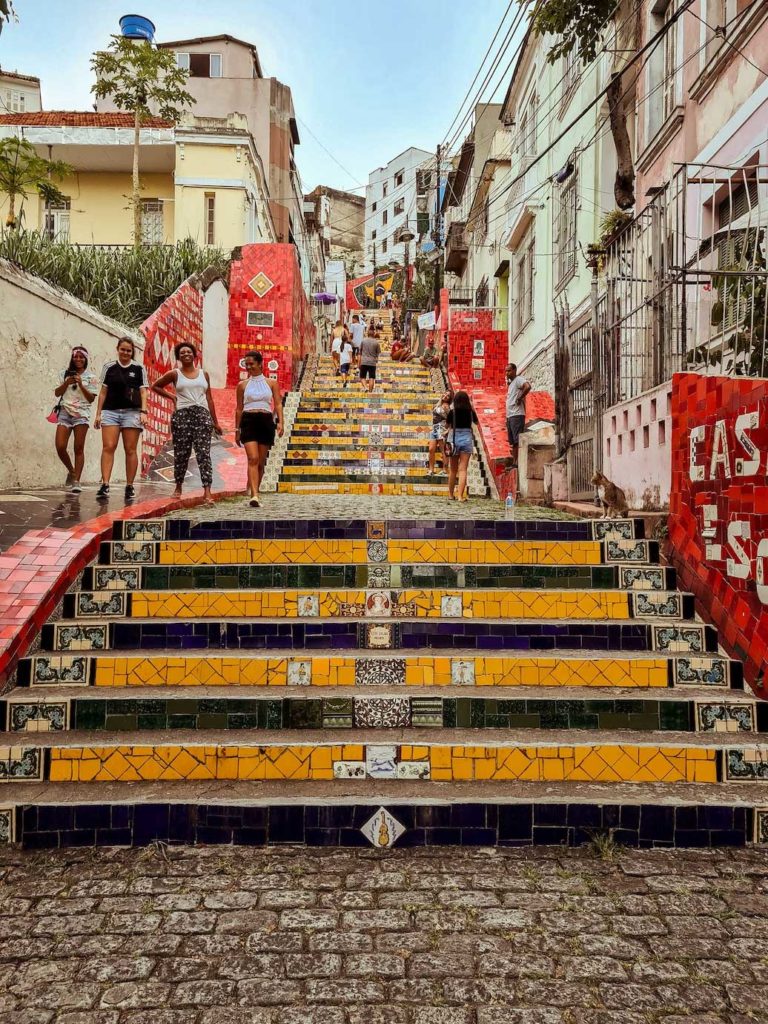

Rio de Janeiro in books
“The Alchemist” by Paulo Coelho:
This internationally acclaimed novel tells the story of Santiago, an Andalusian shepherd boy who embarks on a journey of self-discovery and spiritual awakening. Part of the book is set in Rio de Janeiro, where Santiago encounters various characters and experiences the vibrant atmosphere of the city.
“City of God” by Paulo Lins:
Inspired by real-life events, this gripping novel explores the harsh reality of life in the favelas of Rio de Janeiro. Through vivid characters and intertwining storylines, Lins paints a vivid picture of the challenges faced by those living in the city’s marginalized communities.
“Dom Casmurro” by Machado de Assis:
Considered one of Brazil’s greatest literary works, this novel takes place in Rio de Janeiro during the late 19th century. It follows the story of Bento Santiago, nicknamed Dom Casmurro, as he recounts his love affair with a woman named Capitu, exploring themes of jealousy, memory, and the complexity of human relationships.
“The Sun on My Head” by Geovani Martins:
This collection of short stories offers a glimpse into the lives of marginalized youth growing up in the favelas of Rio de Janeiro. Martins skillfully portrays the challenges, dreams, and resilience of these individuals, providing an intimate and honest portrayal of life in the city.
“Rio Noir” edited by Tony Bellotto:
This anthology brings together a collection of crime stories set in Rio de Janeiro. Written by various Brazilian authors, the book delves into the darker side of the city, exploring themes of corruption, violence, and the complex social dynamics that exist within Rio’s diverse neighborhoods.
“A Death in Brazil” by Peter Robb:
In this non-fiction book, Robb takes readers on a journey through Brazil’s history, culture, and politics, with a significant focus on Rio de Janeiro. The book provides an insightful exploration of the city’s transformation and the socio-political issues that have shaped its identity.
See our Travel Guides.